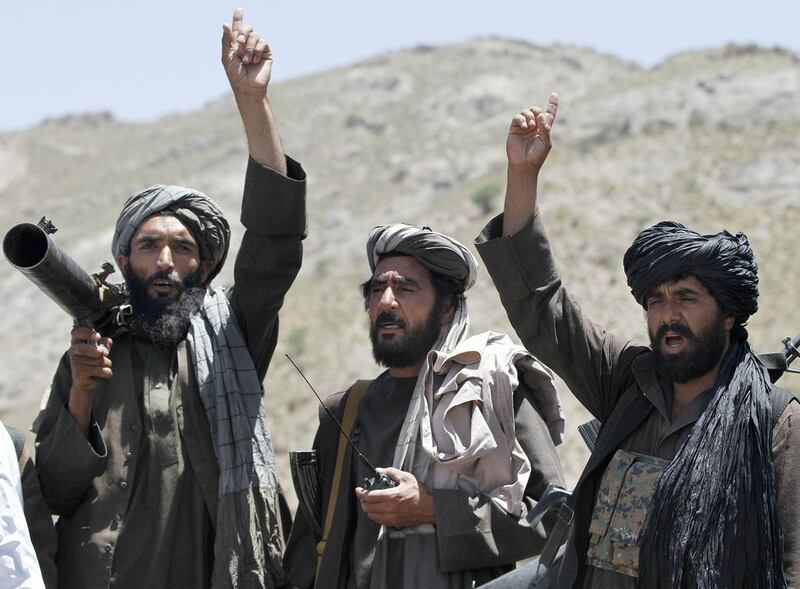This month marks the 15th anniversary of the longest war in American history that continues to rage in Afghanistan, casting a shadow over that country’s future and highlighting the failure of Barack Obama’s strategy to wind down the conflict. Yet the war attracts little international attention, except when a major militant attack occurs.
The situation in Afghanistan is worse than at any time since 2001, when the American invasion ousted the Taliban from power, forcing them to set up their command-and-control structure in neighbouring Pakistan.
Today, the resurgent Taliban hold more Afghan territory than before, the civilian toll is at a record high, and Afghan military casualties are rising to a level that US commanders warn is unsustainable. From sanctuaries in Pakistan and from the Afghan areas they hold, the militants are carrying out increasingly daring attacks, including targets in the capital Kabul, as illustrated by the recent strike on the American University of Afghanistan.
In declaring war in Afghanistan on September 21, 2001, George W Bush explained why the September 11 attacks were a turning point for America: “Americans have known wars – but for the past 136 years, they have been wars on foreign soil, except for one Sunday in 1941 [Pearl Harbor]. Americans have known the casualties of war – but not at the centre of a great city on a peaceful morning. Americans have known surprise attacks, but never before on thousands of civilians. All of this was brought upon us in a single day …”
Yet before he could accomplish his war objectives in Afghanistan, Mr Bush invaded and occupied Iraq in 2003, one of the greatest military misadventures in modern history.
Mr Obama came to office with the pledge to end the Bush-era wars in Afghanistan and Iraq. In Iraq, he did so, only to start a new one in the Syria-Iraq belt.
In Afghanistan, Mr Obama thought he could end the war simply by declaring it over. This is what he did in December 2014, when he famously declared that the war “is coming to a responsible conclusion”.
But the Afghan Taliban had little interest in peace, despite Washington allowing them to set up a de facto diplomatic mission in Qatar, and then trading five senior Taliban leaders jailed at Guantanamo Bay for a captured US army sergeant.
As a result, Mr Obama has had to repeatedly change his plans in Afghanistan. Just two months ago, he decided to keep 8,400 troops in Afghanistan and leave any withdrawal decision to his successor. Some 26,000 American military contractors also remain in Afghanistan.
Why is the US still stuck in the war? In large part, it is because it has fought the war on just one side of the Afghanistan-Pakistan divide and been reluctant to go after the Pakistan-based sanctuaries of the Afghan Taliban and its affiliate, the Haqqani network.
The US assassination of Afghan Taliban chief Mullah Akhtar Mansour in May by a drone strike inside Pakistani territory was a rare exception – a one-off decapitation attack that did little to change the military realities on the ground.
Research shows that militant groups are generally resilient to the loss of a top leader, unless their cross-border sanctuaries are systematically targeted. No counter-terrorism campaign has ever succeeded when the militants have enjoyed cross-border havens.
Although Mr Obama hailed Mansour’s killing as “an important milestone”, it cast an unflattering light on US policy: America took nearly 15 years to carry out its first drone strike in Pakistan’s sprawling Balochistan province, the seat of the Afghan Taliban’s command-and-control structure.
To preserve the option of reaching a bargain with the Afghan Taliban, the US has concentrated its drone strikes in Pakistan’s Waziristan region over the years, often targeting the Pakistani Taliban – the Pakistani military’s nemesis. This has allowed the Afghan Taliban leadership, with the Pakistani military’s acquiescence, to stay ensconced in Balochistan.
Tellingly, the US has not designated the Afghan Taliban as a terrorist organisation.
The Obama administration indeed has engaged in semantic juggling to explain why the group is missing from the US list of foreign terrorist organisations. In truth, it is willing to accommodate the Taliban in a power-sharing arrangement in Afghanistan. It assassinated Mansour because he defiantly refused to revive peace negotiations.
For almost eight years, Mr Obama has pursued the same Afghanistan-related strategy, changing just the tactics. His strategy essentially has sought to use inducements to prod the Pakistani military and its rogue Inter-Services Intelligence agency to go after the Haqqani network and get the Afghan Taliban to agree to a peace deal. The inducements have ranged from annual aid to the supply of lethal weapons.
However, the carrot-without-stick approach has only allowed the Pakistani military to run with the hare and hunt with the hounds.
Mr Obama’s successor will have to make some difficult choices on Afghanistan. To do so, they will have to face up to a stark truth: the war in Afghanistan can only be won in Pakistan. With the Afghan government’s hold on many districts looking increasingly tenuous, the next US president, however, will not have the time to experiment.
Brahma Chellaney is a geostrategist and author





